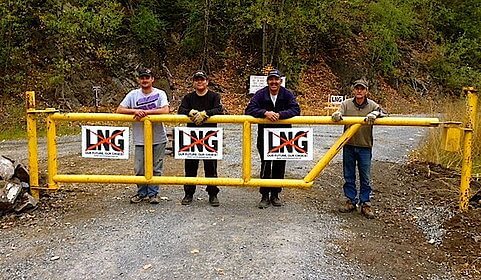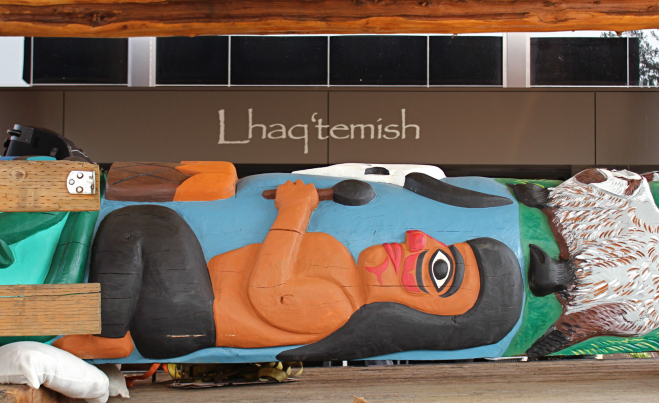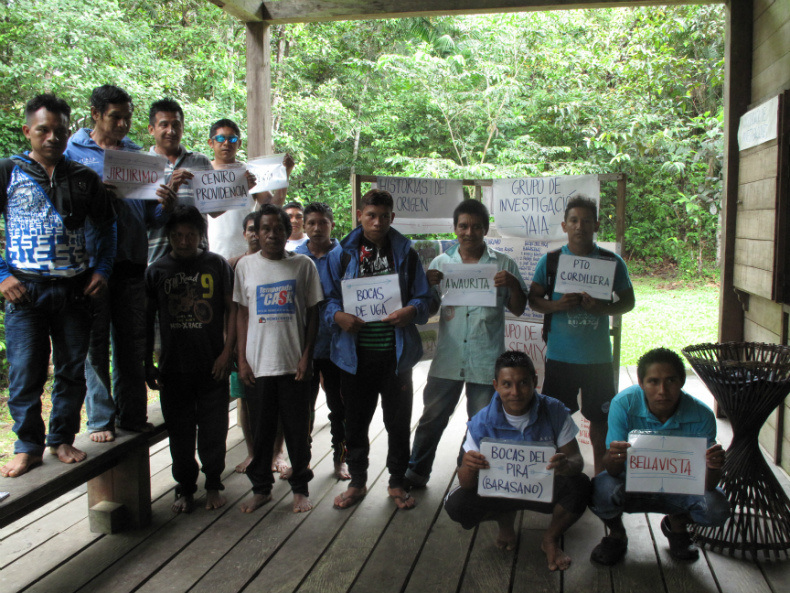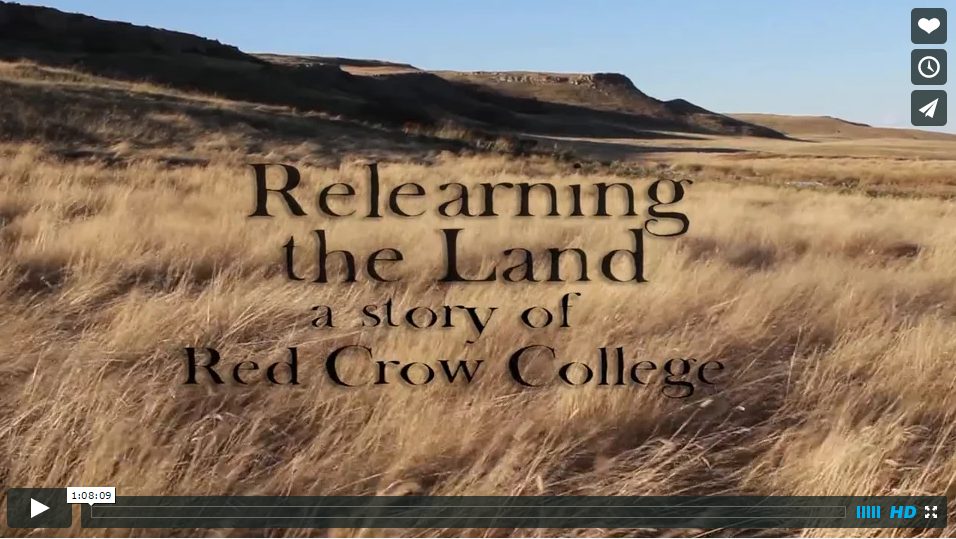On her September 12, 2015 program, Whatcom Tea Party board member and host for the weekly “Saturday Morning Live” (SML) talk radio show on KGMI, Kris Halterman, interviewed Northwest Jobs Alliance (NWJA) President Brad Owens. Halterman’s program afforded Owens a platform to promote the same idea that NWJA previously purported in its August 20, 2015 letter to U.S. Army Corps of Engineers’ Jo-Ellen Darcy, Assistant Secretary of the Army (Civil Works). That idea advanced by NWJA in the letter, is that there is “an apparent motive behind the Lummi Nation’s opposition to the Gateway Pacific Terminal project (and completion of the EIS process) not connected with treaty rights.” [italicized emphasis theirs]
NWJA attached documents in its letter to the U.S. Army Corps of Engineers (“the Corps”), that its group maintains show an “apparent motive” in what NWJA’s letter claims is a “ploy to snatch non-tribal land.” The letter stated:
“By any standards of basic fairness, the U.S. Army Corps of Engineers should not allow itself to be manipulated into aiding what would amount to a devaluation and confiscation of privately-owned, non-tribal lands. Please publically [sic] disassociate yourself from this scheme, ensure that the normal EIS process is completed, and encourage the Lummi to engage in good faith discussions with the proponents of GPT to explore win-win possibilities.”

Signatures of John Huntley and Brad Owens on the Northwest Jobs Alliance, August 20, 2015 letter to the U.S. Army Corps of Engineers
DISCREDITING TACTICS
NWJA’s August 20 letter to the Corps demonstrated an attempt to taint the Lummi Nation’s rightful assertion of its treaty rights relating to the proposed GPT project, and an attempt to influence the Corp’s decision on that subject. NWJA, in its advocacy efforts for SSA Marine/PIT and its GPT project, continues to interfere with the government-to-government relationship between the Lummi Nation and the U.S. federal government—a relationship in which it does not belong. There is a trust relationship and obligation of federal agencies, such as the Corps, to ensure the protection of the Lummi Nation’s treaty rights.

Northwest Jobs Alliance Director and GPT spokesperson Craig Cole speaking at the October 9, 2013 Whatcom Tea Party, GPT Forum
The signers of the letter are NWJA’s President Brad Owens and Chair John Huntley. The listed Director of the NWJA is Craig Cole, SSA Marine’s paid consultant for the Gateway Pacific Terminal (GPT) project. Cole was not a signer on the letter to the Corps. NWJA was created in May 2011 to advocate for the GPT project, and it was filed as a non-profit in October 2014.
According to its original mission statement, which had been displayed on its Facebook page, “The Alliance focuses their efforts on supporting the Gateway Pacific Terminal. . .” Gateway Pacific Terminal (GPT) is a 48 million metric ton per year coal export terminal proposed at Xwe’chi’eXen (Cherry Point) in Whatcom County, Washington, along the Salish Sea shoreline. The terminal applicant is Pacific International Terminals (PIT), a subsidiary created for the GPT project by SSA Marine, the world’s largest independent, privately-held marine terminal operator.
A NATION STANDS TALL TO PROTECT ITS TREATY RIGHTS
Steadfastly opposed and standing squarely in the path of SSA Marine/PIT’s plan for the coal export terminal, is the Lummi Nation, a self-governing nation which is the third largest tribe in Washington state. The Lummi, a Coast Salish people, are the original inhabitants of the state’s northernmost coast and southern British Columbia. GPT, if permitted and built, would be sited at Xwe’chi’eXen (Cherry Point), along the shoreline, which is part of the Lummi Nation’s traditional fishing area. Xwe’chi’eXen (Cherry Point) was an important village site for Lummi ancestors, and is considered culturally and historically significant to the Lummi people.
The Lummi Nation’s treaty rights are secured to them by the U.S. federal government in the Treaty of Point Elliott of 1855. Article 5 of the Treaty provides that, “The right of taking fish from usual and accustomed grounds and stations is further secured to said Indians in common with all citizens of the Territory. . .”
Lummi Nation has devoted significant time and resources to analyzing, evaluating, and carefully deliberating the impacts associated with GPT. The Nation concluded that the adverse impacts to the exercise of its tribal treaty rights, along with the impacts to the natural resources and the continued impacts to significant Lummi cultural properties are unacceptable, and simply cannot be avoided, minimized, or mitigated.
That conclusion led to Lummi Indian Business Council (LIBC) Chairman Tim Ballew II sending a January 5, 2015 letter to U.S. Army Corps of Engineers Seattle District Commander, Colonel John G. Buck, asking the Corps to take action and immediately deny SSA Marine/PIT’s permit application for the proposed GPT project due to the project’s adverse impact to the Nation’s treaty rights. The Corps is still in the process of making a determination on that request.
MISINFORMING LISTENERS

KGMI’s SML radio show host, Kris Halterman testifying at July 7, 2015 Whatcom County Council meeting
SML host Kris Halterman told listeners during her September 12 show: “The, the Lummis have asked the Army Corps of Engineers to just say no, just say no, we don’t care what your study says, we want you just to say no.”
NWJA’s Brad Owens told SML listeners of that same show, “…you know, we absolutely and unequivocally respect the Lummi treaty rights and the Lummi people, and you know, the things that they, that they stand for. However, at this point in time without a study being done and completed relative to their concern of the impact on their fishing, we just don’t know. And you know, as I mentioned earlier, there’s 1.9 or an estimated 1.9 million acres of usual and accustomed fishing grounds, and that’s a lot! Certainly they don’t fish it all, but we need a scientific report that specifically pertains to the area in which the terminal is going to be constructed and how that might impact, if, if at all, their fishing.”
Halterman and Owens neglected to inform the SML audience that actually, a scientific report that pertains to the area in which the terminal is going to be constructed, and how that might impact Lummi fishing had already been conducted, and was released in November 2014. The Vessel Traffic and Risk Assessment Study (VTRAS) of the additional vessel traffic (487 vessel calls annually) that would be brought on by the newly proposed GPT was conducted for SSA Marine/PIT, by Glosten and Associates, with oversight by the state Department of Ecology. Gateway Pacific Terminal [SSA Marine/PIT] and the Lummi Nation also participated in the VTRAS. In the VTRAS, it states that the study is expected to be used by CH2M Hill, the third-party consultant, in preparation of the Environmental Impact Statement (EIS) for the proposed GPT project.
The VTRAS states: “The siting of the wharf and trestle at the proposed GPT and the potential anchorage use by bunkers will interfere with Lummi access to fishing sites. . .The analysis predicts that GPT would increase the Lummi fishing disruption by 76% in the Cherry Point area.” LIBC Chairman Ballew pointed to that significant scientific evidence of the adverse impacts to Lummi Nation’s fishing in the LIBC’s January 5, 2015 letter to the Corps:
Review of the impacts associated with this project, including, but not limited to, those analyzed in the Gateway Pacific Vessell [sic] Traffic and Risk Assessment Study lead to the inescapable conclusion that the proposed project will directly result in a substantial impairment of the treaty rights of the Lummi Nation throughout the Nation’s ‘usual and accustomed’ fishing areas. The Lummi have harvested at this location since time immemorial and plan to continue into the future.
BROADCASTING RUMORS
Getting back to Halterman’s September 12 SML show that focused largely on the documents NWJA had received—these documents were attached to an NWJAAugust 12, 2015 letter to the Whatcom County Planning Commission. NWJA’s “Document Summary,” had the following insinuating header at the top: “Lummi Nation Regulatory and Treaty Rights Strategies for the Taking of Non-Tribal Private Property for the Purpose of Accomplishing a Reservation Annexation.”
NWJA also sent out an August 27, 2015 advertisement to its email subscribers announcing its August 12 letter to the Planning Commission. The inflammatory and unsubstantiated headline on the ad was: “Alliance Weighs in to Protect Cherry Point Jobs: Opposes Lummi Takeover of Heavy Industry Zone.” The advertisement linked to a set of the documents. There was no evidence provided by NWJA to support its headline claim of a supposed “takeover of heavy industry” by Lummi Nation.
The documents were also introduced, with little fanfare, earlier this year, in a June 13 blog post by Kris Halterman on her “Saturday Morning Live—Liberty Road” web site. The post stated that “Saturday Morning Live—Liberty Road” received the documents, although the person or entity which originally obtained the documents was not disclosed.
Comprising the bulk of the documents is a February 7, 2012 letter from the Center for Salish Communities Strategies (CSCS), a non-profit public interest group whose mission was “to promote innovative policy actions that bring the community together in a shared vision of a strong regional economy reflective of the beauty of our surrounding natural world. . .” According to the Washington Secretary of State,CSCS was dissolved (“not active”) as of December 1, 2014, and its original filing date had been August 11, 2011. The website for CSCS, comes up as “server cannot be found.” However, neither of these facts are mentioned during Halterman’s September 12 SML show, and since she referred to the organization in the present tense, listeners were likely to see CSCS as still active, which was, and still is, not the case.
The CSCS letter presented the Lummi Nation with a possible vision of an alternative use of Cherry Point lands and tidelands specific to the proposed GPT site, and outlined some ideas on how to go about that. The potential strategies suggested by CSCS were, at the core, about protecting and preserving the Lummi Nation’s archaeological properties, its cultural heritage and natural resources with the guiding principle of protecting and enhancing the inherent rights and interests of the Nation pertaining to Xwe’chi’eXen (Cherry Point).

Excerpt from September 10, 2015 NWJA press release
That context was omitted from a September 10, 2015 NWJA press release which featured another insinuating headline, “US Army Corps Asked to Avoid Involvement in Lummi Land Scheme,” sent to The Bellingham Herald. The press release was linked-to in the online Herald’s September 11 article.
Halterman referenced the September 11 Herald article during her September 12 SML program and said, “the Herald had an article, I don’t know if it was front page or not, because I just looked at the online version, stating that these were false and fabricated documents.” Her statement is inaccurate. What was actually reported in the story, was that in response to NWJA’s allegations that Lummi Nation plans to “take over” and “de-industrialize” the Cherry Point industrial area, LIBC Chairman Tim Ballew said, “They’re [NWJA] fabricating a false conspiracy.”
Additionally, the Herald story referenced a single-page document that is best described as a chart outlining a strategy, which NWJA sent to the newspaper with its press release. The article reported that Ballew reviewed the document and said it did not come from the tribe. Ballew told the Herald: “What they [NWJA] presented definitely has not been produced by the Nation.”
In comparing the single-page document presented by the NWJA and the samesingle-page document posted on Kris Halterman’s June 13 “SML—Liberty Road” web site, there is a noticeable difference. On the document posted on Halterman’s “SML—Liberty Road” web site, there are no identifying marks to denote the producer of the document, and the top of the page was blank. However, on the document presented by NWJA to the Corps and to the Whatcom County Planning Commission, there were words placed inside brackets written at the top of the page; a label of sorts, which read: [Lummi Nation Planning Document – August 2012].”
PAC AND RADIO SHOW USED TO TARGET LUMMI AND ITS TREATY RIGHTS
Those words at the top of the single-page document appear to have been added since the time that document was originally posted in June, on the SML website. Because that label is in brackets one would assume it was not on the original document. A phone call to NWJA Chair John Huntley to inquire about that was not returned.
Kris Halterman is listed as Committee Chair and Campaign Manager on the SAVEWhatcom Political Action Committee (PAC) registration form. She and Dick Donahue, who also hosts a KGMI talk radio show, “Wealth Wake Up,” started the SAVEWhatcom and the affiliated Whatcom First GPT interest-funded PACs in August and September 2013.

February 5, 2015 post from the SAVEWhatcom Facebook page
In February of this year, SAVEWhatcom, after the news of the Lummi Nation’s January 5 letter to the Corps requesting a GPT permit denial, placed a February 5 post on its Facebook page that appeared to be an attempt to drive public opinion against the Lummi Nation’s strong oppositional stance to GPT. That post was referenced in a February 20, 2015 article published on the “Coal Stop” blog; however that post is no longer displayed on SAVEWhatcom’s Facebook page. It should be noted that the SAVEWhatcom Facebook page name was changed to “Liberty Road” on June 17, 2015.
In that February 5 Facebook post, SAVEWhatcom made a defamatory statement saying that the Lummi Nation’s Silver Reef Casino’s “purpose” is to take people’s wages and social security checks. Statements like this create resentment, and/or can fuel the already present resentment from individuals and groups about Lummi Nation and its efforts to protect its treaty rights.
Besides using her SML talk show on KGMI radio as a promotional platform for the GPT project, SAVEWhatcom PAC Campaign Manager Halterman used her radio show to host anti-tribal treaty and tribal sovereignty guests such as Elaine Willman, a board member and former chair of the Citizens Equal Rights Alliance (CERA), and former Whatcom County Council member Marlene Dawson, who has worked tirelessly to undermine the Treaty of Point Elliott between local Indian tribes and the United States
Halterman and fellow KGMI radio host Dick Donahue promoted the April 6, 2013 “Citizens Equal Rights Alliance Educational Conference” on Federal Indian Policy, held by CERA and its sister organization, Citizens Equal Rights Foundation (CERF) on their radio programs. The conference was held at the Lakeway Inn, in Bellingham, Washington. Terri Hansen, an award-winning Native American journalist and correspondent for Indian Country Today Media Network, reported, “CERA and its sister, Citizens Equal Rights Foundation (CERF), are the foremost anti-sovereignty, anti-treaty organizations in the U.S. anti-Indian movement.” CERA has been called the “The Ku Klux Klan of Indian Country.”.

CERA board member Elaine Willman speaking at the September 26, 2015 CERA “Regional Education Conference” held at the Red Lion Hotel in Kalispell, MT
Charles Tanner, a longtime civil and human rights activist who has conducted research and public education on white supremacist and anti-Indian movements, authored an April 26, 2013 report on the CERA/CERF conference in Bellingham. Tanner reported that, “KGMI talk show hosts Kris Halterman and Dick Donahue both attended the conference. . .A broadcast of Halterman interviewing CERA leaders played as attendees trickled into the conference room.”
RALLYING RESENTMENT
The recent efforts by GPT advocate NWJA, are illustrative of an escalated pattern of rallying resentment of tribal treaty rights, specifically those of the Lummi Nation, and undermining the government-to-government relationship between their Nation and the U.S. government. A copy of NWJA’s August 20, 2015 letter to the Corps was attached to NWJA’s equally inflammatory September 10, 2015 press release in a set of documents linked-to in the previously mentioned September 11 Bellingham Herald article. The underlined (by NWJA) language in both the letter to the Corps and the press release call for a second look. Those excerpts, italicized in this blog’s format, are below.
From the September 10, 2015 NWJA Press Release: “US Army Corps Asked to Avoid Involvement in Lummi Land Scheme” (headline)“The Northwest Jobs Alliance has asked the US Army Corps of Engineers and other government officials to disassociate themselves from a plan by the Lummi Nation to annex Cherry Point to its reservation.”
From the August 20, 2015 NWJA letter to the Army Corps: “While the Lummi people themselves and their treaty rights deserve great respect, this ploy to snatch non-tribal land is just plain wrong.”
Lummi Nation has every right to avail itself of any legal avenue its people have to protect their treaty rights, tribal sovereignty, culture, and archaeological and natural resources. In spite of this, NWJA made allegations in the above excerpts that are unsubstantiated, using words that seek to paint Lummi motives for invoking their treaty rights as unscrupulous.

Section of “Our Painted Responsibilities,” a collaborative participatory mural created during the 6,000 mile, 2014 Totem Pole Journey by people from many different tribal nations
Kris Halterman acknowledged on her September 12, 2015 KGMI radio show that the documents and the allegations that accompanied them, presented by NWJA to these government agencies, were based only on a suspicion: “. . .in order for, for us to ever have a, a pathway to progress for any of the, the public needs here, we have to have open honest and truthful discussions. And when you find documents that, that, that lead you to suspect, not know one hundred percent, but suspect, that part of the reason they’re, they’re [the Lummi] trying to stop this project, would be for some other alternative, you know, purpose.”
It is hard to view such actions as anything but an anti-Indian campaign. Along with taking its maligning and unfounded accusations made against a Native American Nation to the public, Owens’ Huntley’s and Cole’s Northwest Jobs Alliance has brazenly asked the U.S. Army Corps of Engineers to take action that would serve to diminish or abrogate Lummi treaty rights.
***
This article was first published at Coal Stop. Please see the Coal Stop Posts Page for a list of title links for all Coal Stop blog posts. No one’s views expressed here represent that of any collective on Coal Stop. We are all just saying what we, as individuals, think and believe after our research and consideration. We offer references when appropriate and encourage our audience to check facts, research more, and contribute their own views.














